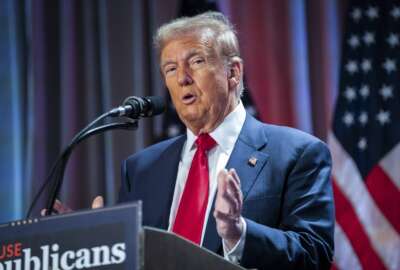Open, transparent government efforts merit more progress needed
Darrell West, vice president and director of Governance Studies at the Brookings Institution joins Federal News Radio as part of the special report, The Obama...
wfedstaff | April 17, 2015 4:08 pm

The Obama administration promised “an unprecedented level of openness in government.”
The Open Government Directive, released in late 2009, aimed to lay the cornerstone for new levels of government transparency. It set new requirements for agencies to post government information online to “promote informed participation by the public,” to improve the quality of that government data and to inculcate a “culture of open government.”
| Why Open/Transparent Government was rated More Progress Needed |
| Reason #1: White House issued policies for openness and transparency.
Reason #2: However, the quality and usefulness of data has been questioned. Reason #3: There’s been only minimal participation in blogs and forums around data “communities.” (More primary source material available on The Obama Impact Resource Page) |
As part of the directive, each individual agency was required to publish its own transparency plan and agency datasets were collected and stored on Data.gov.
But along with that monumental effort have been persistent questions about whether agencies have actually made progress on the administration’s aims. Some open gov advocates have criticized the website for a lack of high-quality and usable government data.
For those reasons, when it comes to creating a more open, transparent government, Federal News Radio believes more progress is needed. As part of Federal News Radio’s special report, The Obama Impact: Evaluating the Last Four Years, Federal News Radio examines 23 different ideas and initiatives instituted by the Obama Administration and ranks them as effective, ineffective and more progress needed.

The administration has definitely put an “emphasis” on improving transparency in government, said Darrell West, vice president and director of Governance Studies at the Brookings Institution. West, the founding director of Brookings’ Center for Technology Innovation.
“They have put a huge number of data sets into the public domain; they set up a website — Data.gov, where people can go and see all sorts of information in terms of consumer safety, airport problems and environmental problems,” West said. “So, I would give the administration good grades for their efforts to improve transparency and openness.”
However, ever since the initiative was launched, there have been complaints of the quality of the data posted on Data.gov, for example.
“That certainly is a continuing challenge, not just for government, but that’s also true in the business sector as well,” West said. “What we’re trying to do is to create these data-sharing networks so we can take advantage of the wealth of information that is out there.”
|
Changing the culture
Besides the specific technological changes required for the administration’s transparency efforts, West pointed to another hurdle.
“Changing the culture is the biggest challenge but, if you can make progress there, also the biggest beneficiary,” he said. “And I think there has been some progress in this area, but it really varies a lot across different parts of the federal government.”
West said before 9/11 there was similarly a big push to put information online and be more transparent. “But after 9/11, the federal government pulled back, started to emphasize security over transparency.”
“Over the last decade, we’ve really spent trying to navigate those two competing poles: the impulse toward being more open and being more transparent on the one hand, but also protecting security especially in the digital realm,” West said.
More from the special report, The Obama Impact: Evaluating the Last Four Years
Part 1: Evaluating the Obama administration’s management initiatives
Part 2: Evaluating Obama’s technology reforms
Part 3: Evaluating Obama’s workforce initiatives
Part 4: Evaluating Obama’s acquisition efforts
Part 5A: What would a second-term for President Obama mean for feds?
Part 5B: What would a Romney presidency mean for federal workers?
Copyright © 2025 Federal News Network. All rights reserved. This website is not intended for users located within the European Economic Area.





